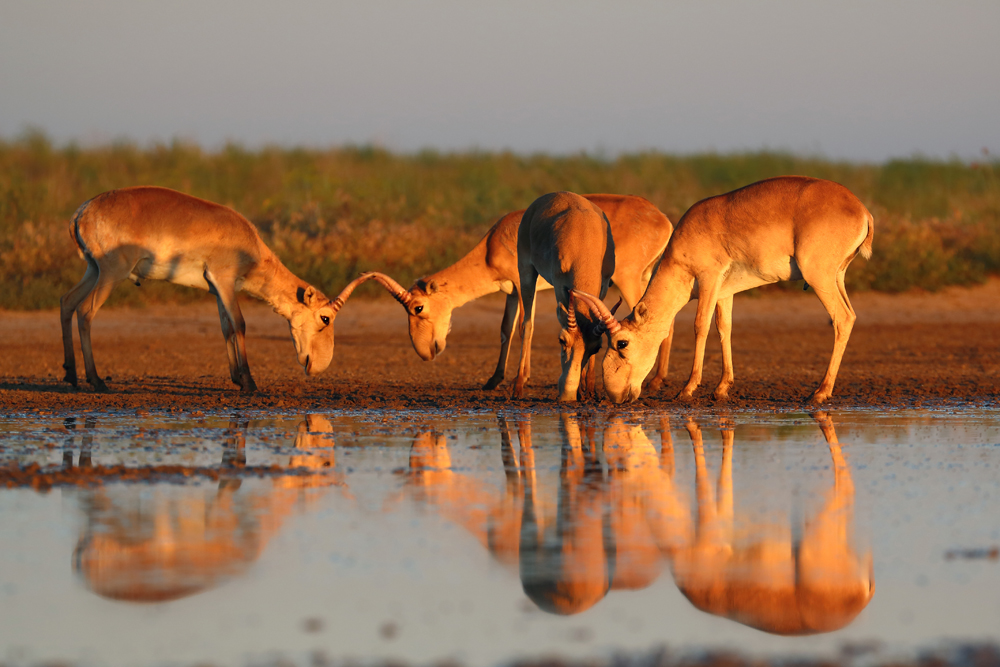University of Oxford
11a Mansfield Rd
OX1 3SZ
UK

Credit: Andrey Gilev, Karina Karenina
As you might have guessed from the lack of capitalisation, the parliament which I am referring to is not a national one; rather, the parliament that spurred our paper is the Members’ Assembly of the International Union for Conservation of Nature. If that name sounds familiar to you, it’s probably because of the IUCN Red List of Threatened Species, the world’s most comprehensive assessment of species’ extinction risk (and where the well-known terms “Vulnerable”, “Endangered”, and “Critically Endangered” come from).
The Members’ Assembly, made up of government and NGO representatives, meets every four years at the IUCN World Conservation Congress to make decisions about priorities and actions for conservation and sustainability. In 2012, the Congress was convened in Jeju, Republic of Korea, and at that meeting the Members’ Assembly passed a Resolution: that the IUCN needs to move beyond assessing extinction risk only and develop a standardised way to measure species recovery as a way to systematically assess conservation success. The idea for a “Green List of Species” was born—an assessment of recovery and conservation impact that would complement the Red List.

For another, the IUCN Resolution recognized the need to recognize and incentivise successful conservation. As it stands currently, limited funds for conservation are allocated preferentially to species at the greatest risk of extinction. While this makes sense, in practice it means that once a conservation success has been achieved—i.e., moving a species further away from the brink of extinction—funding is often lost, which can allow decades of work to be eroded and the species can slip back in the wrong direction. This creates a perverse incentive for conservationists to downplay successes, which can give the public the impression that conservation doesn’t work when in fact there have been many great achievements! If we can create a standardised way to measure recovery, perhaps new funding streams can be created to help us maintain it.
Thus, the 2012 Resolution was passed, and an international effort began. A Task Force on Assessing Conservation Success was formed, and worldwide consultations began to figure out what a Green List of Species would look like in practice. Between 2012 and today, over one hundred scientists, conservation practitioners, and policymakers have been consulted in meetings worldwide: from Cuernavaca, Mexico to Tallinn, Estonia; from Abu Dhabi, to Honolulu, to London. The result is the published draft framework, which we hope will provoke debate and stir comments and constructive criticism. As we note in the paper, the Green List is not intended as an alternative to the IUCN Red List. Rather, it will be fully integrated into the IUCN Red List and thus allow a more complete assessment of a species’ conservation status, prospects, and our collective impact.
Over the next few years, we will be testing and refining this draft framework for an official launch at the next World Conservation Congress in 2020. If you’d like to learn more, offer comment, or get involved, we invite you to read our paper in Conservation Biology and explore our project pages.
Literature Cited
Akçakaya, H. R., Bennett, E. L., Brooks, T. M., Grace, M. K., Heath, A., Hedges, S., Hilton‐Taylor, C., Hoffmann, M., Keith, D., Long, B., Mallon, D. P., Meijaard, E., Milner‐Gulland, E.J., Rodrigues, A., Rodriguez, J. P., Stephenson, P. J., Stuart, S. N., Young, R. P. (2018). Quantifying species recovery and conservation success to develop an IUCN Green List of Species. Conservation Biology.
McConkey, K. R., & Drake, D. R. (2006). Flying foxes cease to function as seed dispersers long before they become rare. Ecology, 87(2), 271-276.
McConkey, K. R., & O’Farrill, G. (2016). Loss of seed dispersal before the loss of seed dispersers. Biological Conservation, 201, 38-49


